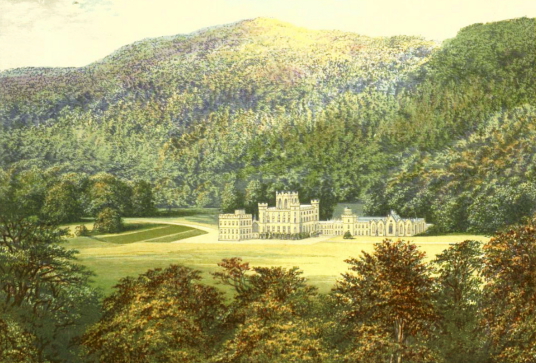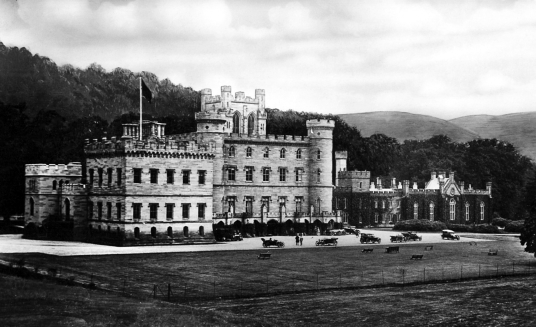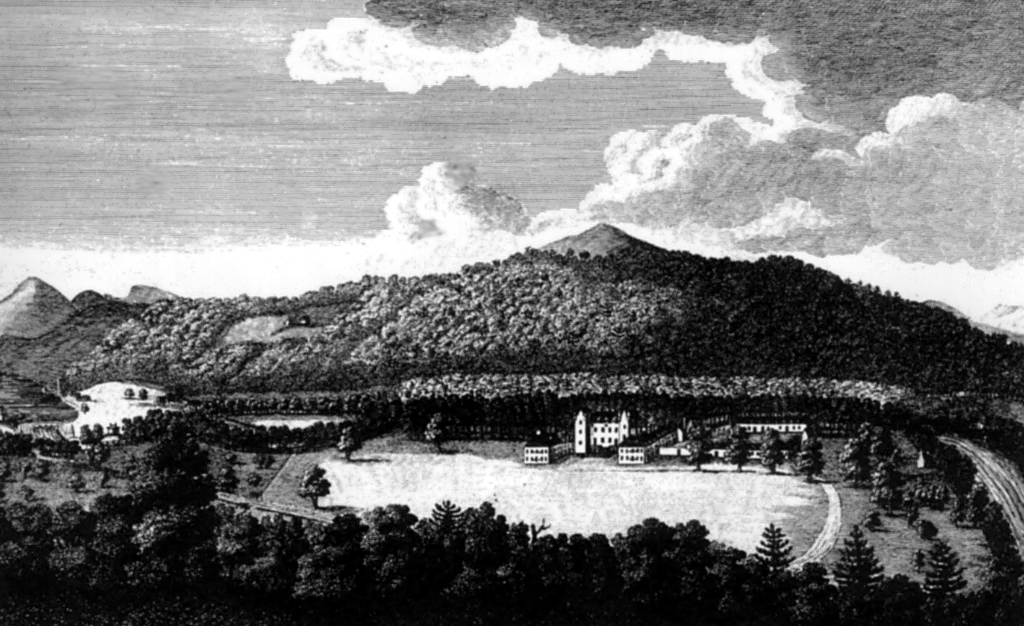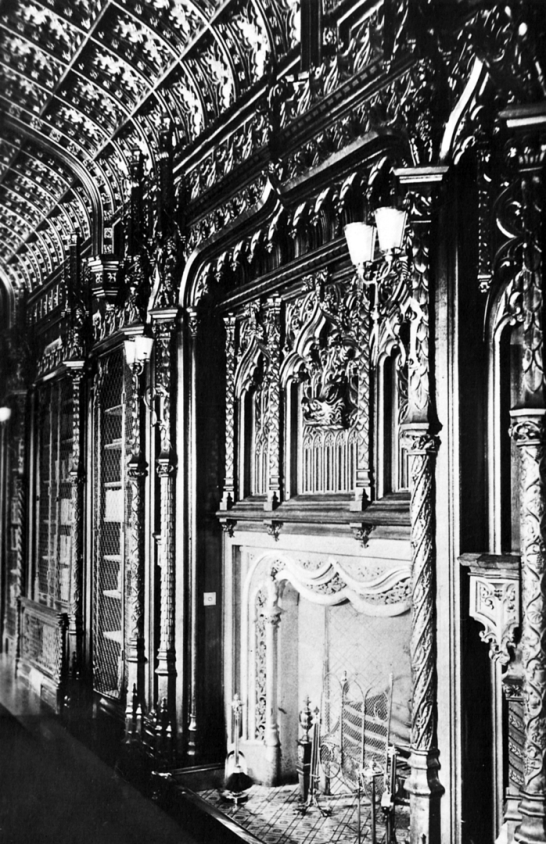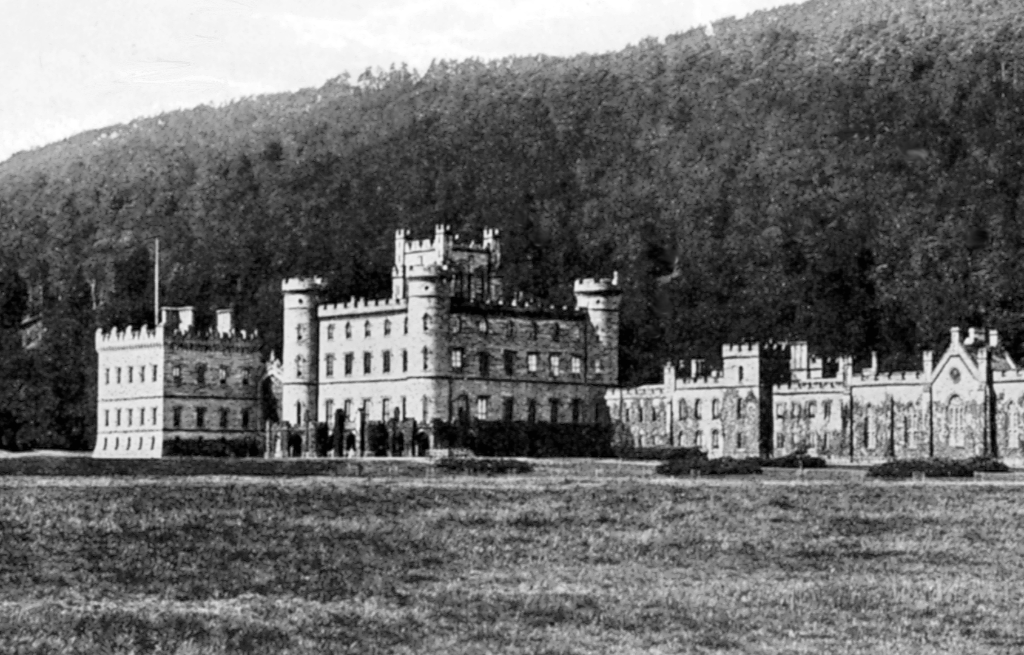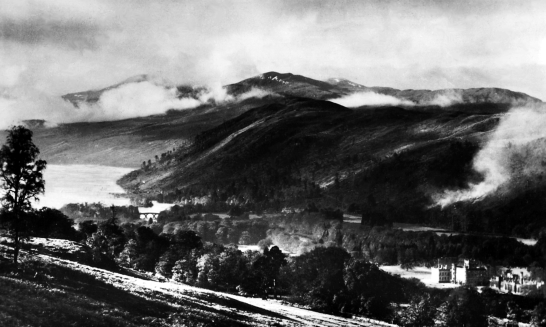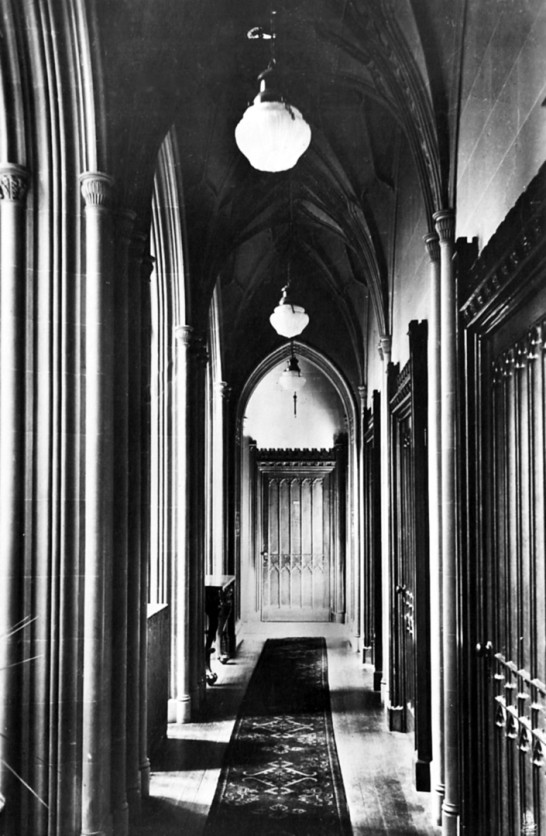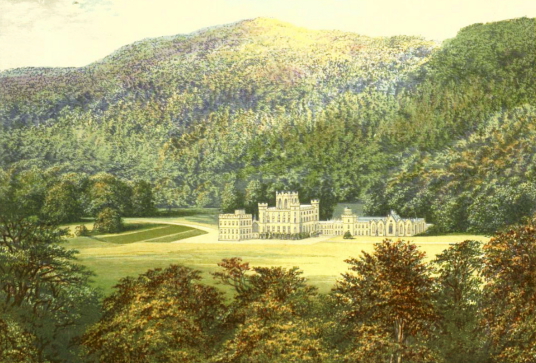Taymouth Castle
Perthshire: About 5 miles west of Aberfeldy, on minor roads north of A827 or south of B846, 1 mile north-east of Kenmore, just south of River Tay, at Taymouth Castle.
Private NN 785466 OS: 52 PH15 2NT
OPEN: Proposed hotel, spa and golf course. Exclusive residences
Taymouth Castle, a large domineering mansion built between 1801 and 1842, incorporates cellars from an altered and extended 16th-century Z-plan tower house. The property was originally known as
Balloch. The main block rises to four storeys with taller angle towers and lower wings. The old castle was mostly demolished in 1799 and replaced, incorporating wings by William Adam. There were
later alterations and additions.
The building has a sumptuous interior with the central staircase rising some 100 foot, and there are fabulous painted ceilings, ornate plasterwork, wood panelling and stained glass
windows.
The castle is depicted on Pont’s map of Loch Tay as a large edifice with bartizans in a large walled courtyard, and called Ballach.
This was a property of the Campbells of Glenorchy from 1432, and Sir Colin Campbell was one of those who captured one of the murderers of James I. Sir Duncan Campbell, ‘Black Duncan’, was made a baronet of Nova Scotia in 1625 and built a castle here, as well as spending much time improving his estates (also see Kilchurn, Finlarig and Barcaldine). In 1645 there was an order for garrisons for the Marquis of Argyll’s regiment in which the house of Balloch is mentioned.
Sir John Campbell of Glenorchy acquired the debts of George Sinclair, Earl of Caithness, and then tried to acquire both the title and the property. This was resisted by the Sinclairs and came to conflict, although the Campbells won the resultant battle with much slaughter. Despite this victory, the claim was ultimately unsuccessful, although Sir John was made Earl of Breadalbane in 1681 as recompense, and the family were created Marquises in 1831.
The existing mansion was built between 1801-42, and Queen Victoria visited in 1842, but by 1920 had become a hotel, with a golf course laid out in the deer park. The house was used as a hospital for Polish troops during World War II.
and in the 1980s was being used as a school for the children of Americans in Europe, although this was closed in 1979.
The castle and estate were put up for sale in 1997 for offers of more than £5,500,000. There were plans to convert the building into a hotel and spa with exclsuive residences, while the golf course is being enlarged and redeveloped. It is not clear at what stage the development is at…
The castle was used as a location in the 1997 movie Mrs Brown, about Queen Victoria, with Judy Dench and Billy Connolly, being used as Balmoral.
The castle is reputedly haunted, and ghostly footsteps have been heard here. During the time it was used as a school, some students were so scared they would not stay in the building, while other visitors are said to have fled their rooms during the night. Some accounts have a harbinger of doom, which foretells events in the resident family. The building is said to have a ‘Green Lady’, possibly the same ghost, as well as the bogle of a young Indian prince.
This magnificent seat may well carry us back in thought to the feudal times, and even in them it would have been conspicuous for size, grandeur, and beauty.
The estate is no less than about a hundred miles long, and the castle is situated moreover in one of the most delightful valleys for which the Highlands of Scotland are so deservedly famous.
So regal a residence deserves a royal description, and the following lines by Queen Victoria are from Her Majesty's "Leaves from the Journal of Our Life in the Highlands:"
"The drive was quite beautiful all the way to Taymouth. The two highest hills of the range on each side are (to the right, as you go on after leaving Dunkeld) Craig-y-Barns and (to the left, immediately above Dunkeld) Craigoinean. The Tay winds along beautifully, and the hills are richly wooded.
"Taymouth lies in a valley surrounded by very high, wooded hills; it is most beautiful. The house is a kind of castle, built of granite. The coup d' ceil was indescribable. There were a number of Lord Breadalbane's Highlanders, all in the Campbell tartan, drawn up in front of the house, with Lord Breadalbane himself in a Highland dress at their head, a few of Sir Neil Menzies' men (in the Menzies red and white tartan,) a number of pipers playing, and a company of the 92nd. Highlanders, also in kilts. The firing of the guns, the cheering of the great crowd, the picturesqueness of the dresses, the beauty of the surrounding country, with its rich background of wooded hills, altogether formed one the finest scenes imaginable. It seemed as if a great chieftain in olden feudal times was receiving his sovereign. It was princely and romantic. Lord and Lady Breadalbane took us up stairs, the hall and stairs being lined with Highlanders.
"The Gothic staircase is of stone and very fine; the whole of the house is newly and exquisitely furnished. The drawing-room, especially, is splendid. Thence you go into a passage and a library, which adjoins our private apartments.
"The dining-room is a fine room in Gothic style, and has never been dined in till this day. Our apartments also are inhabited for the first time."
The deer park is very extensive, and is adorned with abundance of stately timber: there is an avenue of lime trees nearly a mile long. Here was formerly an ancient castle, called Balloch, but only some remains of it are now extant. It was erected by Colin, sixth Laird of Glenorchy, who died there in the month of April, 1583.
The modern mansion was begun about the beginning of the present century. It stands upon the southern bank of the Tay, in a semicircular lawn about a mile below the termination of the lake, embosomed by woods that well-nigh seem interminable. It consists of a large quadrangle, with a circular tower at each corner, a lofty lantern tower in the centre, and an eastern wing one hundred and eight feet long, in which are comprised the offices. An arched cloister goes round the exterior on three sides, the tracery of which is exceedingly light and beautiful.
The principal rooms are the baron's hall, containing a large collection of books, the dining room, the drawing room, and the Chinese room. The grand staircase, in the florid Gothic style of architecture, rises to the full height of the central tower, being lighted above by long pointed windows, while galleries open below to the apartments in the higher storeys.
There are in the castle many valuable pictures by some of the great masters, Titian, Anuibale, Carraci, Tintoretto, Castiglione, Teniers, Vandyke, Rembrandt, Leonardo da Vinci, Salvator Rosa, etc.
It has been well written, by one who viewed this splendid place under the right aspect, "Nothing can exceed the beauty and grandeur of the scenery of this princely domain. Wood and water, mountain, meadow, objects animate and inanimate, in endless variety, are here so blended, and on such a scale, that when viewed from certain positions, and in certain states of the atmosphere, they give you an impression as if you had been transported to a region of enchantment. But to speak becomingly, there is here the workmanship of far more than enchanter's ken, or enchanter's might:"
The family of the Marquis of Breadalbane derives from Gillespick Campbell, living in the tenth century.
From: A Series of Picturesque Views of Seats of the Noblemen and Gentlemen of Great Britain and Ireland, Volume II (by F. O. Morris, 1880s)


